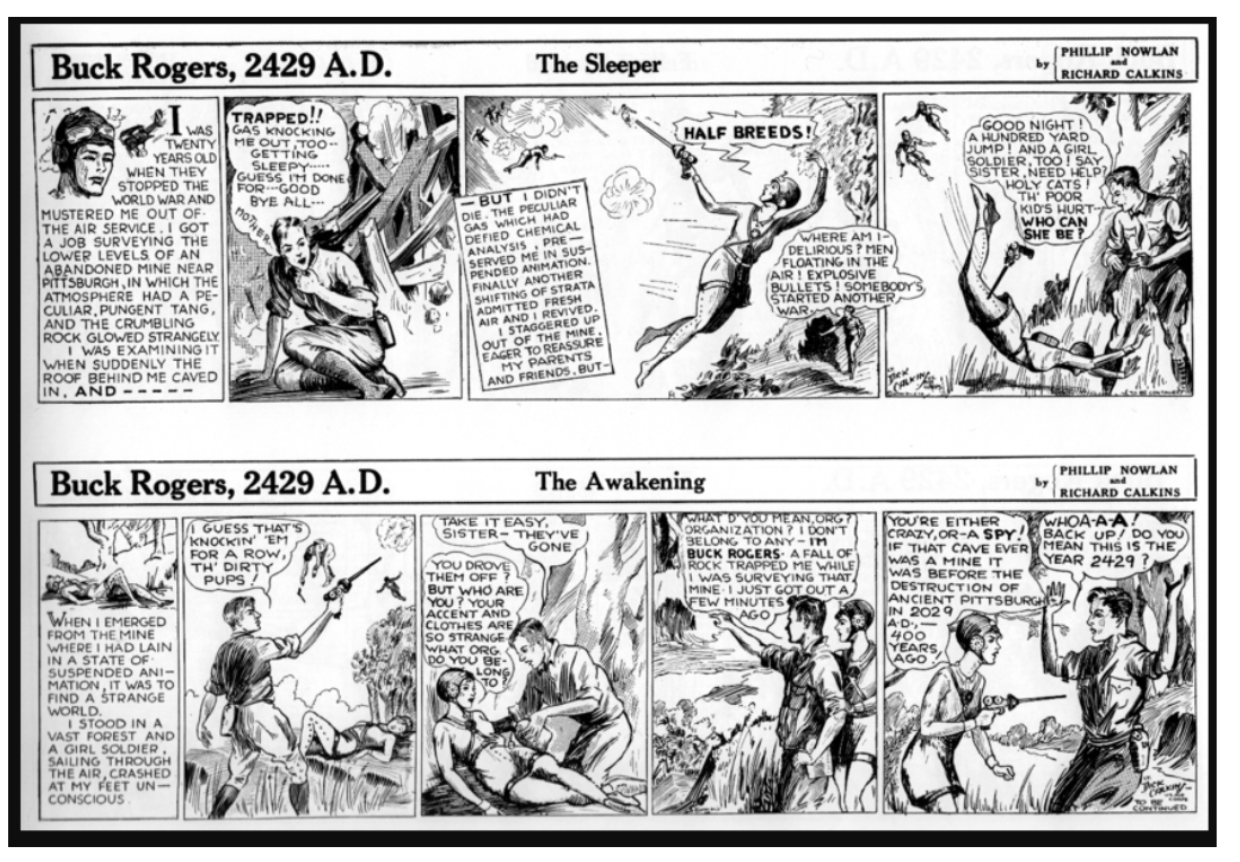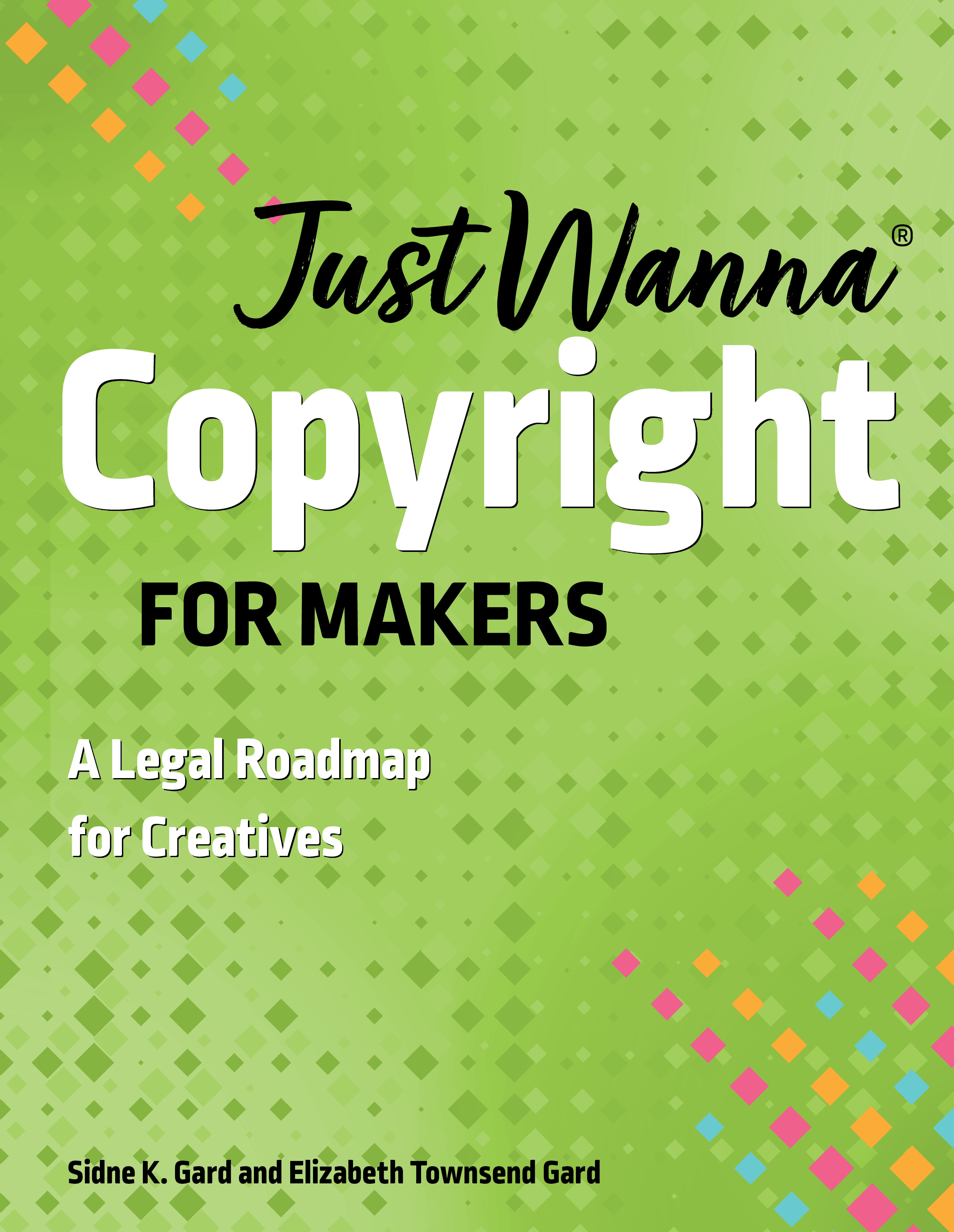Just Wanna Copyright for Makers and Public Domain Day!
Posted by Elizabeth Townsend Gard & Sidne K. Gard on Jan 3rd 2025
We are very excited—because it was just Public Domain Day and also because Just Wanna Copyright for Makers has just been published!
Happy Public Domain Day! Every year, on January 1, new works that had been under copyright come into the public domain, and we celebrate. Which works depends on where in the world you are looking, as the term of copyright varies from country to country. And famously, the public domain for published works was frozen for twenty years in the U.S. So, in the U.S., we are still strangely excited about finding out what is now coming into the public domain, since published works coming into the public domain just started again in 2018. We’ve seen Steamboat Willie come into the public domain in 2024, along with the first iterations of Mickey Mouse. We have also seen the original Winnie-the-Pooh, The Great Gatsby, and so much more. So, what’s now in the public domain as of January 1, 2025?
Note: Copyright can be complicated in two ways: there are different lengths of a copyright term, depending on a number of factors; and more importantly, just because the original work is in the public domain doesn’t meet subsequent versions or aspects. It gets confusing. Let’s sort some of it out.
For this blog post, let’s look at the most common term: 95 years from publication for comics and books.
Published Works from Around the World in the U.S.
Section 304 of the 1976 Copyright Act tells us that the longest term for published works in the U.S. is 95 years from publication. So, if a work was published anywhere in the world longer than 95 years ago, it is in the public domain in the United States!
And so what is the magical year? 1929. Anything published during or before 1929 is in the public domain in the United States.
Comics
There are a number of original comics that joins the public domain this year. Let’s look at a couple.
Buck Rogers. The sci-fi comic appeared in U.S. newspapers in 1929. These were published in 1967. And so, it is only the original ones from 1929 that are in the public domain. The derivative works inspired by the comics are obviously not necessarily in the public domain, just the underlying works from 1929. And so what would that be? Buck Rogers first appeared in 1928 in a collection, Amazing Stories. This entered the public domain in 2024. Philip Francis Nowlan‘s short story version first appeared in this collection and was titled, “Armageddon - 2419.” Then, on January 7, 1929, “Buck Rogers in the 25th Century” appeared in 47 newspapers as a comic strip. Those published during 1929 are in the public domain in the U.S.

Tarzan. Created by Edgar Rice Burroughs, Tarzan of the Apes has long been in the public domain, having been first published in 1912. But the daily comic strip did not begin until January 7, 1929 (the same date as Buck Rogers!) It would run until July 29, 1972. The comic was adapted by R.W. Palmer and was illustrated by Hal Foster. Like Buck Rogers, even more so, Tarzan has appeared in myriad forms, and only the works published during or before 1929 are in the public domain. Edgar Rice Burroughs’ novel Tarzan and the Lost Empire also enters the public domain in 2025. This was the 12th book–halfway through the 24-book series. It was first published in the beginning of 1928 as a serial, and so some of the parts came into the public domain last year, But more modern versions? Still protectable. Any new features of the Tarzan franchise? Also protectable.

Disney Characters. More original characters from Disney Animation Studios are entering the public domain. We’ve already seen the original Mickey and Minnie, of course, in 2024 when Steamboat Willie came into the public domain. Now, we also have Horace Horsecollar, who first appeared in The Plowboy. And in 2026, the original Pluto will join his friends in the public domain. We will have to wait for Donald Duck for five more years! (The Wise Little Hen, 1934). The Plowboy also is the first time Minnie is seen with her gloves. So, that element of Minnie is now in the public domain – that version, but not the later versions, as those are still protected by copyright. Her black stockings were included in The Karnival Kid (1929). And her oversized shoes were in The Gallopin’ Gaucho (1928). But the bow was not included until 1940 - so that is not in the public domain, along with other features. Here is Minnie in Steamboat Willie (1928). Notice her cute hat! Disney, obviously, owns the rights to Mickey and his friends still under copyright, as well as when they are used as trademarks.



Popeye. Yep! He first appeared on January 17, 1929 (for a timeline, go to popeye.com). January was a big month in 1929, don’t you think – Popeye, Buck Rogers, and Tarzan all appeared in comics. And in August, 1929, the love affair with Olive Oyl begins.


Literary Works
This year, 2025, a whole bunch of new works join The Great Gatsby, which came into the public domain last year. Let’s take a look at a few of them.
Virginia Woolf’s A Room of One’s Own. This is a massively influential essay that continues to this day to be influential. The idea is simple: women need to have “money and a room of her own to write fiction.”
Erich Maria Remarque’s All Quiet on the Western Front. In six weeks, writing after work, Erich Maria Remarque wrote his most famous novel that came to embody the experience of World War I. And now, both the German version and English version are in the public domain. The war generation began really writing about their experiences starting in 1928 and concluding around 1933. This is particularly important to me, as my doctoral work studied their authors, and in part the restoration of these works in Section 104A led me to law school! And trying to understand copyright and fair use. That feels like a lifetime ago. Other war generation works are also now starting to enter the public domain including Mary Borden's The Forbidden Zone (1929) Robert Graves’ Goodbye to All That (1929), Richard Aldington, Death of a Hero (1929),
The German version of Remarque’s book came into the public domain in 2024. Other works already in the public domain include Ford Madox Ford’s Parade’s End trilogy (1924-1927), and Edmund Blunden’s Undertones of War (1928).
Ernest Hemingway’s A Farewell to Arms. Hemingway’s A Farewell to Arms also comes into the public domain this year, a story set during World War I. There have been film adaptation in 1932, 1957 and 1996, along with a TV Series in 1966, a poem, a play in 1932, and a radio play in 1937. A new film is supposed to be in the works, which was announced in 2023.
These are just three examples. There are gobs more! Anything published in 1929.
Films, Artwork, Sound Recordings, and Musical Compositions
There are all kinds of works that are in the public domain now! And you can find lists on Wikipedia, and other blogs listing things that are now in the public domain. And sound recordings have a different means of configuring, as do unpublished works created before 1978.
In Just Wanna Copyright for Makers, we take you through how to determine the copyright status of not just published works, but sound recordings, unpublished works (which quilts often are), foreign works, and more. Sound fun? Purchase a copy!!!
The following blog post is legal information, not legal advice. No attorney-client relationship is formed. You just learn a little bit of copyright!
What can you do with a public domain work?
If the work is in the public domain, you can use it any way you want without asking permission. Yes, you can embroider the original Minnie Mouse and her beautiful hat. You can recreate the first time Popeye and Olive Oyl kiss. So very awesome. What you cannot do is use these characters as a trademark (e.g. name your company Minnie Mouse or use her in a logo). You also can’t use later versions of the characters. Those elements are still under copyright.
Want to learn more about trademark? Check out Just Wanna Trademark for Makers, our first book with C&T!
...
Elizabeth Townsend Gard is the John E. Koerner Endowed Professor of Law at Tulane University Law School and an avid quilter since childhood. She holds a Ph.D. in Cultural History from UCLA and has been cited by the U.S. Supreme Court for her work on copyright. Elizabeth is the lead author of the series. Elizabeth focuses on the legal expertise of the book.
Sidne K. Gard is a Distinguished Scholar Scholarship student at the School of the Art Institute of Chicago and an Entertainment Editor at F Newsmagazine. Sidne focuses on translating legal concepts to artists and crafters. Sidne is the Managing Editor and Design Director for the Just Wanna Trademark for Makers series.
Elizabeth and Sidne started Just Wanna Quilt, which has also expanded to crafts and art. Listen to the podcast and learn more at justwannaquilt.com.










